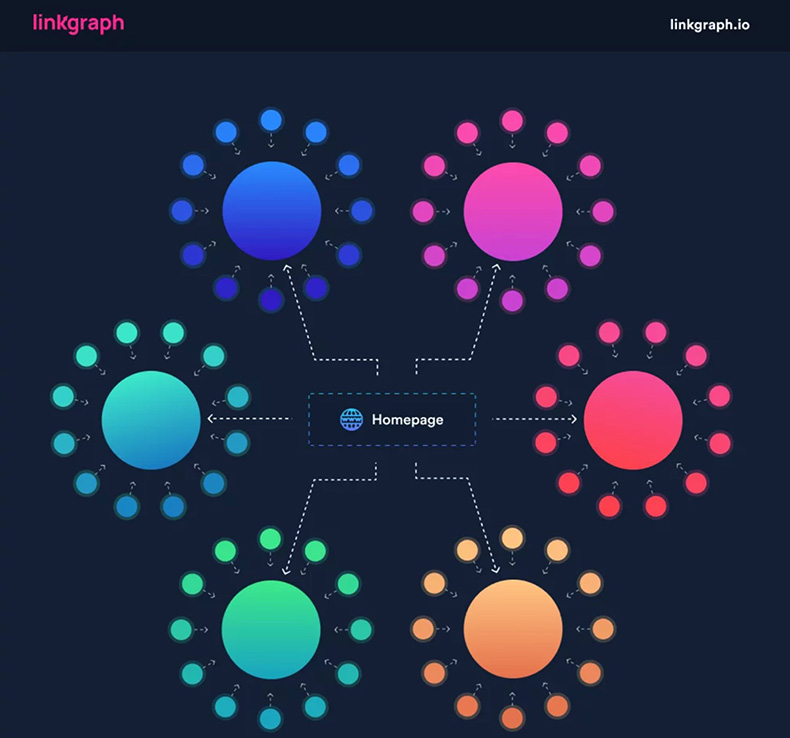Before we dive into why a topic cluster plan is a must-have for any content marketing strategy, let's start with some current SEO stats that demonstrate the critical role of organic search.
- Organic search drives more than 50% of all website traffic. Paid search brings in only 10%, and social accounts for 5%.
- The first five search engine results receive almost 68% of all clicks.
- Google dominates the search engine market share, controlling almost 87%.
Because organic search is the primary driver of Web traffic to B2B and B2C websites, it's clear that SEO should be a central strategy in your content marketing efforts. And because Google controls close to 90% of market share, the primary SEO focus should be Google.
So, what can you do to ensure you are taking advantage of over 3.5 billion searches every day and not giving away revenue to competitors?
Enter topic clusters, one of the most powerful SEO weapons to have in your toolkit.
What Are Topic Clusters?
Topic clusters, AKA content clusters, are not a new concept to content marketing, but they are more relevant now as search engine algorithms have become more complex. A topic cluster is a group of content assets (webpages) that are centered on a topic.
There are three main components to consider when creating a topic cluster:
- Pillar content
- Cluster content
- Hyperlinks
Every topic cluster is built around a piece of pillar content, or a pillar page (or power page). The pillar page serves as the authority page for the topic you aim to rank for.
Pillar pages should focus on broader subject areas and target keywords with higher search volumes. Two examples of asset types that could become pillar pages are educational resource page and a service page.
For example, let's say your company offers content marketing services, and your goal is to rank for "content marketing" (which has an average monthly search volume of 14,800). Your pillar page would be an in-depth resource covering the core questions on that topic. In this example, your content marketing services page could stand as your pillar page.
Next is the accompanying cluster content, which should focus on longer-tail queries that relate to your core topic. Those are typically blog posts that explore a broader subject in more detail and specificity. The topic cluster in its entirety should answer all the questions that a searcher may have about a specific subject.
Subtopic pages will all link to the pillar page, which signals to search engines that the pillar page is the authoritative resource on your core topic.
Using the same example as before, you might create the following cluster content to narrow the focus from the "content marketing" pillar page:
- Copywriting (6,600 average search volume)
- Blog writing (720 average search volume)
- E-book writing (90 average search volume)
- Whitepaper writing (50 average search volume)
How Topic Clusters Improve SEO
So, how do topic clusters improve search engine optimization?
As search engine algorithms become more complex as a result of the rapidly evolving search landscape, it is necessary to change to the way your content strategies are developed and organized for high-performing results.
Topic clusters signal to Google that your site is authoritative in your core topics. Putting information on your website in this architectural format improves your SEO by...
- Enabling Google to understand the hierarchy of your website and how your content interrelates
- Allowing readers to dig deeper into the topic via interlinked content, therefore staying on your site and increasing the dwell time there
- Saving time vs. the original model of optimizing each post, because the pillar page is optimized for conversions and cluster content is optimized for generating traffic (also, each time the pillar page is updated, Google is offered fresh content, which results in a better ranking)
- Elevating the rankings for other cluster content linked to the same pillar page whenever one of those cluster pages is particularly high-performing
How to Get Started With a Topic-Driven Approach
Are you ready to level-up your content strategy with a topic cluster approach?
Follow these steps to get started:
- Align your core business offerings with your target audience. Start by mapping out what issues your audience has. You can use surveys, research online communities, and similar sources for your particular industry.
- Group each major issue into broad subject areas. Highlight how your product or service offers a solution to each issue.
- Build out the core topic and subtopics by using keyword research, analyzing competitors, and listening to what topics your target audience is discussing on social media.
- Create and develop your pillar pages and related blog posts. As you interlink your content, ensure the pillar page remains at the top of the linking hierarchy.
- Map out your content strategy and track your documents, which can help organize your process and ensure all of your content has been linked correctly.
Here's a visual of what your website might look like with multiple content pillars.

Source: linkgraph.io
Changing your focus to creating content with a topic-driven approach will not only improve your organic search traffic but also help you create better content and provide a more positive experience for your visitors.
Get started with the topic cluster framework on the next batch of content you are planning to develop so search engines and readers will recognize you as an expert in your niche.
More Resources on Topic-Driven and Topic-Cluster Content Strategy
How to Find the Perfect Content Curation Topics for Your Content Strategy
So You've Got Your Topic, Now Here's How You Create Content That Can Rank




